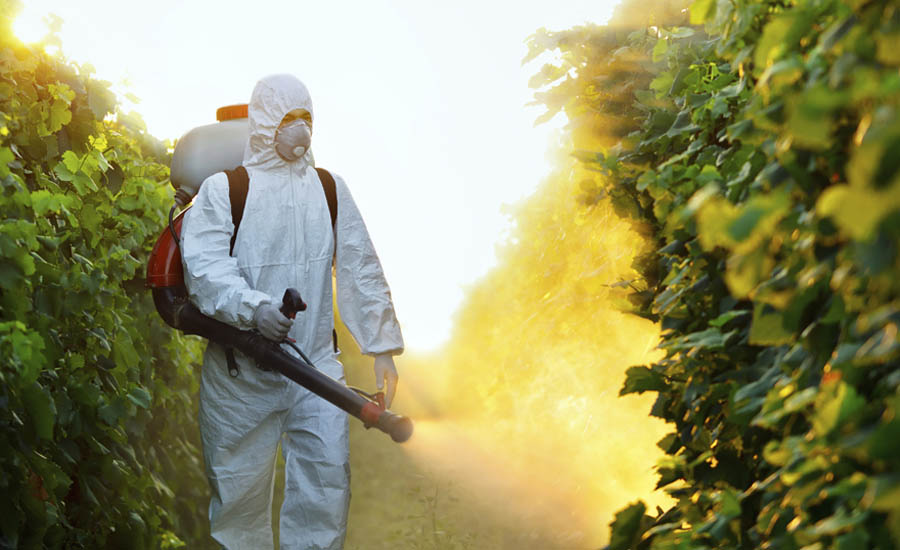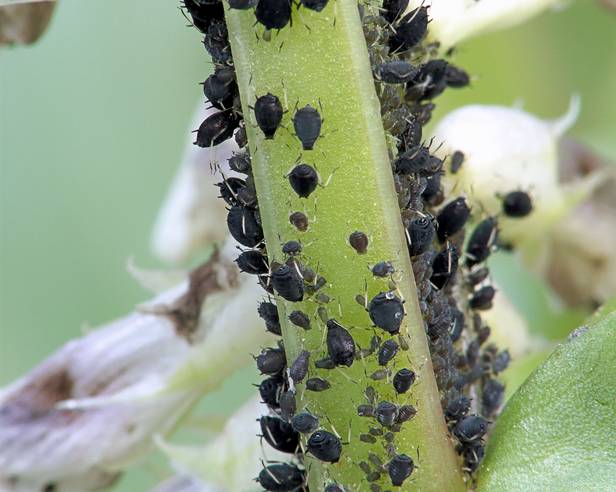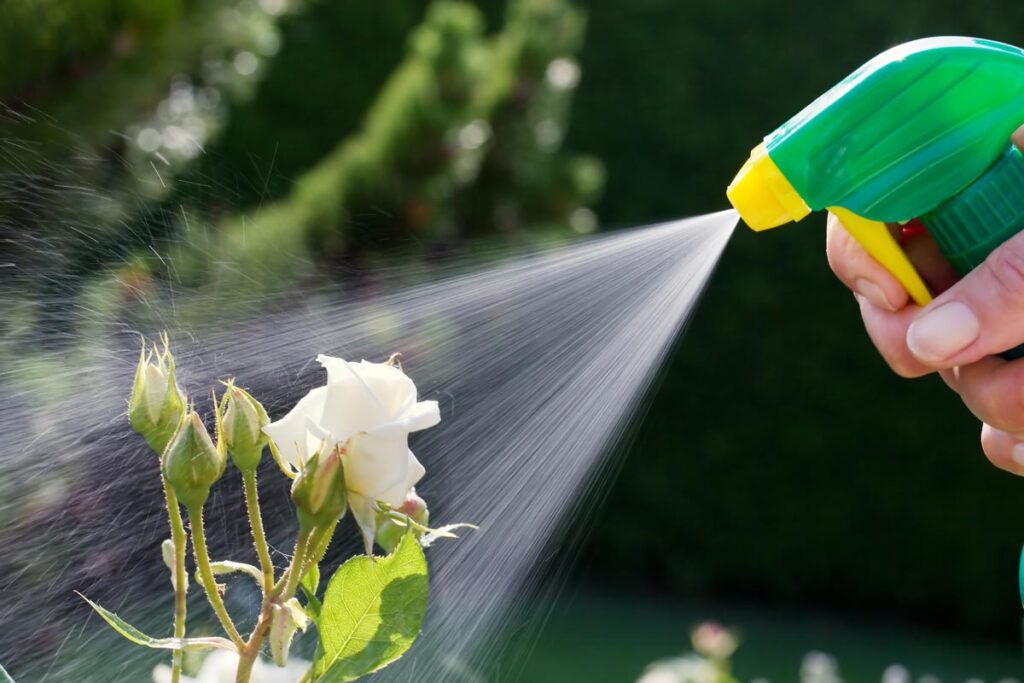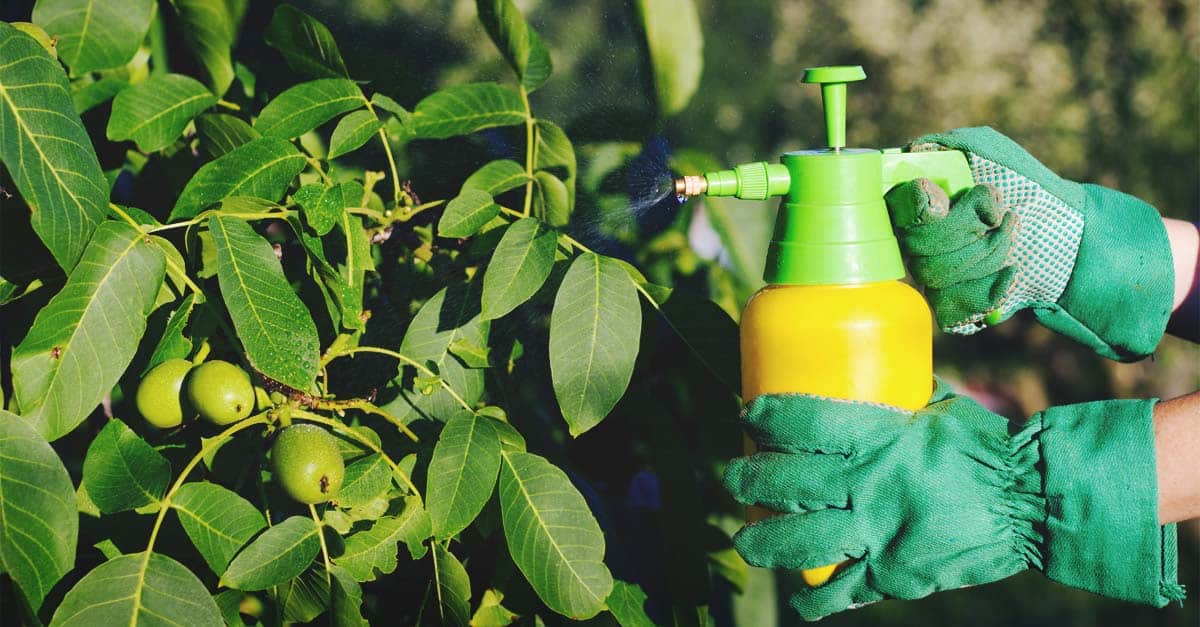Pests in the garden are a real pain! Besides destroying everything you’ve worked so hard for, they’ll devour all the beautiful, fresh vegetables you had planned to harvest, and generally cause mayhem.
Pest infestations must be dealt with as fast as possible if the plants are to be saved, but using chemicals to accomplish this comes at a great cost. Chemicals have a long-term impact on our gardens, not just on our wallets. Organic insecticides are far better for your vegetables and the health of your garden than conventional pesticides.
Why Shouldn’t Chemical Pesticides Be Used?

Chemical insecticides fail to distinguish between helpful insects and those that pose a threat to human health. Bees, butterflies, and ladybugs are frequently killed with the targeted insects. This is a terrible situation! Natural pollinators and predators are urgently needed in our gardens to keep pests at bay and to keep our plants growing robust and healthy.
Why Shouldn’t Chemical Pesticides Be Used?
Chemical insecticides fail to distinguish between helpful insects and those that pose a threat to human health. Bees, butterflies, and ladybugs are frequently killed with the targeted insects. This is a terrible situation! Natural pollinators and predators are urgently needed in our gardens to keep pests at bay and to keep our plants growing robust and healthy.
Natural pesticides share the same problem as conventional pesticides in that they fail to distinguish between pests and beneficial insects. However, when natural products are used, the applications are less toxic, spread more slowly, and are less likely to have a significant impact on plants other than those that are sprayed. For pest management, human-created chemicals often contain ingredients that extend their life, broaden their scope of action, and penetrate the soil and the water. Using natural insecticides may need more work on your part, but it’s worth it in the long run!
Pesticide residue can also be left on crops by chemical pesticides, which means that you may be ingesting the pesticide while eating something from your garden. Generally speaking, a thorough washing will remove most pesticides from vegetables, although this isn’t always the case. If we don’t want to risk our health or the health of our loved ones, we should not.
Finally, toxic pesticides penetrate our soil and remain for years. Thus, it is necessary to maintain good soil to have a healthy garden.
A List of the Top 10 Natural Pesticides and Their Uses

It doesn’t matter if you’re up against aphids or beetles or a swarm of ants_ there are numerous natural and practical treatments.
1. The Basic Insect Terminator

The components for this natural pesticide are likely present in your house. Make it yourself, and you’ll be ridding your home of a lot of bugs in no time! Aphids, thrips, mites, whiteflies, insect larvae, and other soft-bodied insects are all killed by this pesticide. Soap removes the insect’s outer layer, resulting in the insect’s dehydration and death. The use of oil guarantees that the mixture covers the insects’ complete bodies. Because beneficial insects aren’t eating the leaves where you’re spraying, this pesticide isn’t harmful to them either.
Formula:
- 1 quart warm water, 1 tablespoon oil, and 2 teaspoons natural liquid soap (Dr. Bronner’s or something similar). Natural soaps are the only ones you should be using, as other brands may contain compounds that are harmful to your garden.
- Spray it into a bottle after a good shake.
- Infested plants should have it sprayed on both sides of the leaves.
2. The Step-Up Insect Terminator

Insects with soft bodies do not stand a chance against the Basic Insect Eliminator Formula. Adding a blend of essential oils, on the other hand, will enhance its overall effectiveness. Because pests despise the smell, the strong-smelling oils will deter further infestations. Peppermint repels aphids, ants, fleas, spider mites, and squash bugs. Flies, fleas, and cabbage looper larvae are all deterred by rosemary, while ants and mosquitoes are kept at bay with citrus. Cedarwood, peppermint, and citrus are all detested by moths. Whiteflies, aphids, mites, and earwigs are all deterred by eucalyptus oil.
Formula:
- To begin, prepare a blend of essential oils. To one ounce of water, add 20 drops each of the essential oils of peppermint, rosemary, citrus, cedarwood, and eucalyptus.
- Pour 1 quart of water and 2 teaspoons of natural liquid soap (we suggest Dr. Bronner’s or a similar brand) into a spray bottle and add 10 drops of your essential oil mix. Natural soaps are the only ones you should be using, as other brands may contain compounds that are harmful to your garden.
- Spray it into a bottle after a good shake.
- Apply it to plants that are infected.
3. The Super Advanced Insect Terminator
Try this mix if you’re dealing with exceptionally stubborn bugs and need a boost in potency. Soft-bodied insects like aphids, thrips, and mites on leaves benefit from this combination. It’s a great way to keep rabbits and deer out of your garden, too.
Formula:
- Avoid getting cayenne in your eyes or pores by wearing gloves and eye protection.
- Blend three garlic bulbs and a small onion in a blender until smooth.
- Cayenne pepper powder, about a teaspoon, is next on the list. Allow the mixture to incubate overnight.
- Remove the particles from the liquid and store it in a separate container. It is possible to use the garlic cloves and onion trimmings to enrich your garden’s soil.
- Add the remaining liquid to a quart of warm water and stir.
- We recommend Dr. Bronner’s or a similar brand of natural liquid soap in addition to the 1 tablespoon oil.
- Spray it into a bottle after a good shake. Apply to plants that are plagued with bugs.
4. A pesticide with Flower Power
A natural toxin found in some chrysanthemum flowers is pyrethrins. Synthetic pesticides often contain this toxin, but it’s been enhanced by adding other chemicals to make it more toxic. Many of the potentially harmful ingredients that aren’t listed on the label of synthetic pyrethrin mixes are included in the mixtures themselves. Contrary to popular belief, the ingredients in these pesticides are neither organic nor natural. Do not be fooled by the labeling that claims they are “natural.” Many of them remain in the soil and plants for a long period of time.
It’s not as potent as the chemical version, but it’s safer for everyone to use the natural form from the flowers. Only the bugs that were present at the time of application are killed by this product. If you want to make an insect-fighting tea out of chrysanthemums, you’ll need to make sure you get the right ones. It is possible to use the Dalmatian chrysanthemum and the Persian chrysanthemum (Chrysanthemum cinerariifolium and Chrysanthemum coccineum).
Aphids, whiteflies, and the Colorado potato beetle are all pests that Flower Power pesticide is effective against. This toxin has the potential to harm beneficial insects, so it is critical to protect them. When bees and butterflies aren’t buzzing around, spray the area with the product. Then, cover the rows that have been treated for 24 hours with a tarp or sheet.
Formula 1:
- Freshly plucked flowers should be dried in a dark, cold place.
- To get a fine powder out of them, grind them up. Protect your respiratory system by using a mask and using caution.
- To make a spray, combine 14 cup powder with 14 quart water and shake vigorously.
- Mix thoroughly.
- The toxicity of home-grown flowers varies widely, so you might have to fiddle with the ratio.
Formula 2:
- Add 1/8 cup of isopropyl alcohol to one cup of fresh-picked flower heads.
- Set aside for three days.
- Store the mixture in a labeled container after straining it.
- A spray bottle can be made by mixing 12 cup of the solution with 2 quarts of water and then using the spray.
5. Tobacco Punch
Everyone knows that nicotine can harm humans, but did you know that it may harm insects as well? Tobacco has been used for centuries as a natural pesticide, and it works! Pests like aphids and slugs are easy prey for tobacco punch insecticide. Tobacco leaves from your own garden work best, although natural store-bought rolling tobacco also works.
Formula:
- Pour one gallon of hot water over a cup of dry tobacco and stir to combine.
- Soak it for two days. Add one teaspoon of natural liquid soap to the strained mixture.
- Preparation: Place all ingredients into a spray bottle and shake vigorously.
- As needed, apply to plants that have been impacted.
6. Tomato Leaf Aphid Pest Control
There are natural toxins in the tomato’s leaf because it is a nightshade plant, just as tobacco. Therefore, aphids and other soft-bodied insects can be killed by the alkaloids in tomato leaves.
Formula:
- Two cups of finely chopped tomato leaves and two cups of warm water should be added to the mixture.
- Allow the mixture to settle for at least 24 hours before using.
- Add two more cups of water after straining the leaves.
- Preparation: Place all ingredients into a spray bottle and shake vigorously.
- Apply this to sick plants to help them fight off the infection.
7. Simple Salt Spray
This is a very simple and a no-brainer solution. Pests are put off by a salt solution, which prevents them from perching on leaves to eat their lunch. They are extremely sensitive to the salty sensation on their skin and will avoid it at all costs. When used sparingly in the garden, salt aids plants in absorbing nutrients from the soil. Don’t overdo it with the salt spray, since it can be harmful and cause leaf burn if used in excess.
Formula:
- Add 1⁄4 cup Epsom salts to 2 quarts of water and mix thoroughly.
- Shake to dissolve the salts.
- Apply to plants with a spray bottle.
8. Natural Neem Oil
Neem oil, a natural pesticide and fungicide derived from the Neem tree, is both biodegradable and natural. nectar beetles, aphids, mealybugs, lacebugs, spider mites and other insect larvae are all affected by Neem’s effects. As you can see, it’s a fantastic natural insecticide for a variety of uses. Not all hard-bodied insects, such as beetles, are affected by it.
Neem oil acts in two ways: it coats the leaves of the plant when sprayed on them, and it also works as a topical application. A suffocating effect is caused when the insect eats the leaf because of the oil’s effect on their respiratory system. Natural insecticides such as Neem oil also affect hormonal patterns. Insects stop feeding, flying, and mating as a result of this. They eventually go extinct. To get the best results from Neem, you must wait 24-72 hours after using it.
Because it may harm beneficial insects as well, it should only be used sparingly and only when absolutely necessary. Spray it first thing in the morning to keep out bees and butterflies.
To avoid skin irritations or allergic reactions, use the oil with care. When used in big doses (as in the insecticide), it can be poisonous, but it isn’t enough for it to be harmful.
Formula:
- Use only cold-pressed Neem oil that is 100 per cent pure. Do not buy Neem oil pesticide combinations from the shop, as they contain other chemicals and rarely contain the natural insecticide Neem oil.
- Combine 1 gallon of water, 1 tablespoon of Neem oil, and 1 teaspoon of dish soap.
- Pour into a bottle after a good shake.
- If necessary, reapply every seven to ten days.
9. Deterrent Diatomaceous Earth
Don’t be put off by the seemingly incomprehensible name. Diatomaceous Fossilized algae provide the foundation of the Earth’s crust. It’s a powder that’s sold in weight-based bags. With razor-sharp edges and minuscule coarse granules, this particular substance is akin to small sand grains.
To kill insects, Diatomaceous Earth penetrates their outer layers and absorbs them into the skin. After this happens, the insects lose their ability to hold water, and they die as a result. Diatomaceous Earth is very effective against small insects, such as ants, silverfish, pillbugs, ticks, and bedbugs.
Slugs and snails dislike the sharpness of the edges, which makes it a good deterrent. The best part is that neither pets nor people are harmed by this material. However, this pesticide has a severe drawback: it is ineffective when moist. Reapplying it after rainfall is necessary.
It’s best to use Diatomaceous Earth sparingly, never on flower heads or in areas where helpful insects live.
Formula:
Using a dry powder, sprinkle the powder over affected plants or the area around the plant’s base. Wearing a mask is recommended if you’re applying a lot of powder, as it can irritate the lungs. The food-grade version is what you’re looking for.
10. Natural Pest Fighters
Although this is not a pesticide mixture, it is one of the most time-honored and proven techniques of eradicating pests from the garden. You won’t have to apply pesticides as often if you have a healthy population of pest-eating insects on your side.
Using natural solutions to keep pests from eating and ruining your hard work in the garden isn’t a challenge. You can use natural methods to get rid of pests, and you now have the means to do it. Make sure you don’t let those bothersome bugs get in the way of your gardening efforts and dreams.

